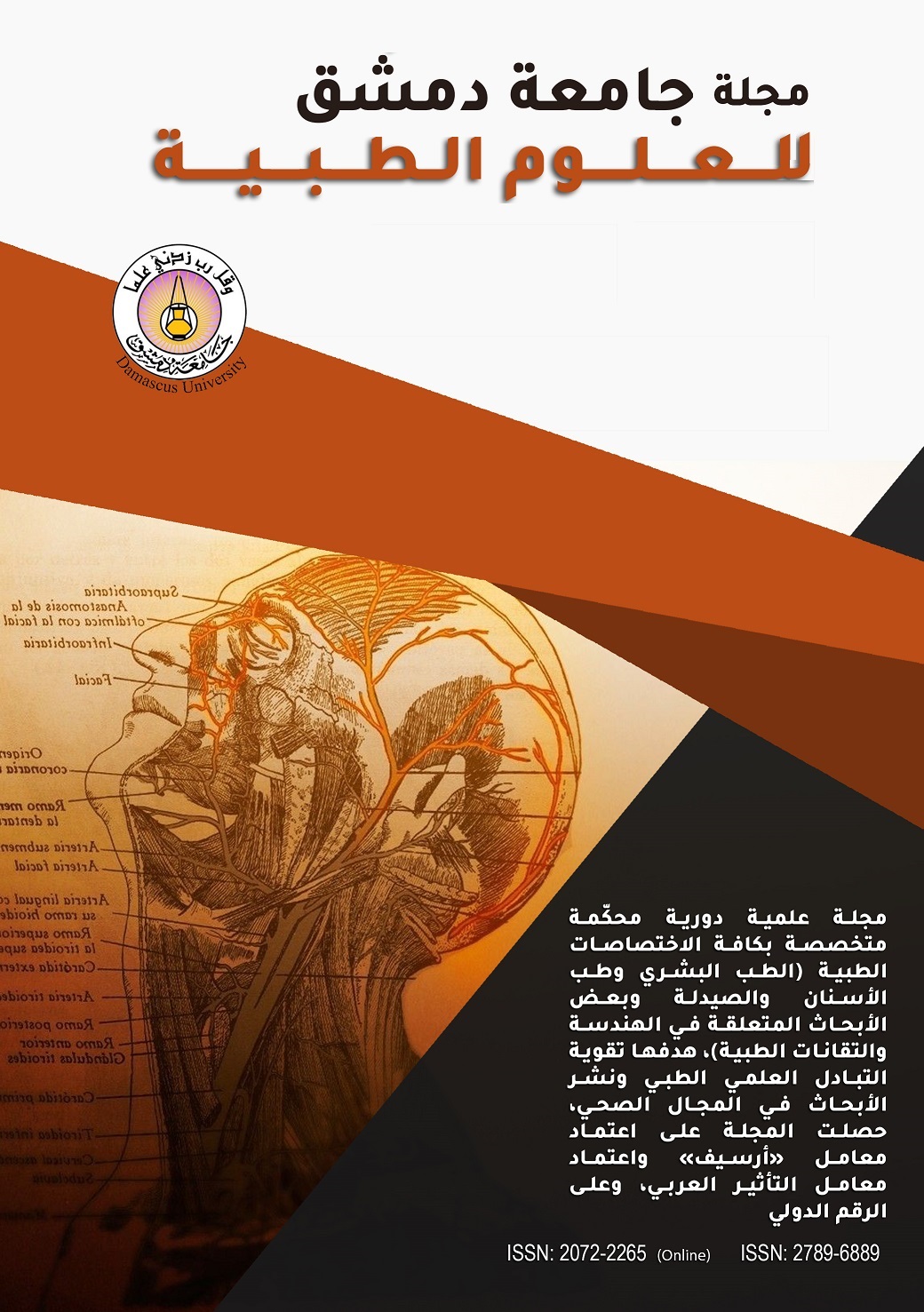دراسة الوفيات الوالدية حول الولادة: دراسة استعادية
الكلمات المفتاحية:
الوفيات الوالدية، معدل الوفيات، الأسباب، التصنيف الدولي للأمراض من منظمة الصحة العالمية.الملخص
- الهدف: دراسة معدل الوفيات الوالدية في مشفى التوليد وأمراض النساء بجامعة دمشق ما بين عامي 2010-2019، واسبابها.
- مواد البحث وطرائقه: دراسة استعادية Retrospective study ، شملت حالات الوفيات الوالدية في مشفى التوليد وأمراض النساء الجامعي بدمشق ما بين 2010-2019.
- النتائج: ما بين عامي 2010-2019 تم تسجيل 45 حالة وفاة والدية، وقد بلغ معدل الوفيات الوالدية 36.9/105. بلغ متوسط العمر 30.2 عاماً وكانت النسبة الأكبر بأعمار ما بين 25-34 عاماً. كانت 15.6% عديمة ولادة، 62.2% لديهن سوابق ولادة مهبلية، 37.8% لديهن سوابق ولادة قيصرية، 75.6% بتمام الحمل. حدثت الوفاة قبل الولادة في حالة واحدة، وفي سبع حالات أثناء الولادة، وفي37 حالة بعد الولادة، وكانت الولادة مهبلية في 42.2% وقيصرية في 55.6%. كان السبب مباشر في 95.6%، غير مباشر في
2.2%، وفي حالة واحد لم يكن مرتبط بالحمل. شملت أسباب الوفاة: نزف عطالة رحمية 40%، ارتعاج 8.9%، تمزق رحم أثناء المخاض 8.9%، صمة أمينوسية 8.9%، مشيمة منزاحة مع نزف 6.7%، تمزق عنق رحم 4.4%، صمة رئوية 4.4%، نزف تالي لإجهاض 2.2%، صدمة انتانية بعد إجهاض 2.2%، مقدمة ارتعاج على أرضية ارتفاع توتر شرياني 2.2%، مقدمة ارتعاج 2.2%، انفكاك مشيمة مع نزف 2.2%، اختلاطات تخديرية 2.2%، نزف بسبب نقص صفيحات ثانوي لنقائل دماغية 2.2%، تمزق طحال غير رضي 2.2%.
(36.9/105) عن السنوات السابقة(44.2-72.5/105)، وكان النزف بأنواعه وأسبابه المختلفة أشيع سبب وقد كان أشيعها نزف العطالة الرحمية

